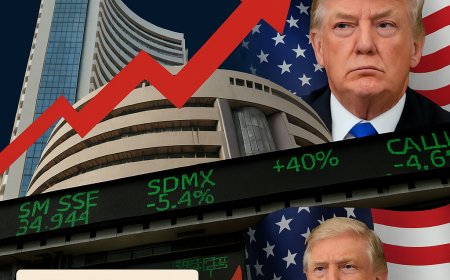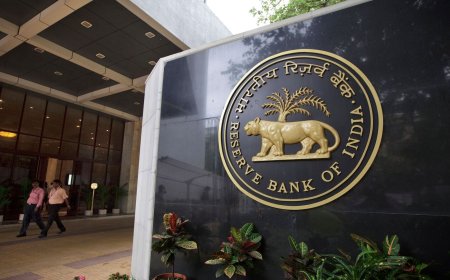Gilts Risk More Turmoil as Swift Sellers Replace Steady Buyers
UK gilt markets face fresh turmoil as swift sellers replace traditional buyers, increasing volatility. Analysts warn of risks to stability, debt costs, and policy signals.

The British government bond market is facing a renewed bout of volatility as long-term gilt yields rise and investor sentiment shifts. A growing number of quick-moving traders are replacing the traditional base of long-term, steady gilt buyers, leading to fresh concerns about sustained instability in the UK sovereign debt market.
Rising Gilt Yields Signal Investor Anxiety
Gilt yields, particularly on the 10-year and 30-year bonds, have surged in recent weeks, prompting fears that Britain’s borrowing costs could stay elevated for longer than expected. The 10-year gilt yield recently touched 4.4%, while the 30-year yield has pushed toward 4.7%, marking some of the highest levels since October 2022’s mini-budget crisis.
Analysts attribute the rise in yields to a shifting demand dynamic—where swift sellers such as hedge funds and leveraged traders have increasingly taken center stage, replacing traditional buyers like pension funds, insurers, and foreign sovereign investors.
“We’re witnessing a structural shift in the buyer base of gilts,” said Imogen Bachra, head of UK rates strategy at NatWest Markets. “The more transient investors are quicker to exit at signs of trouble, which increases day-to-day volatility and overall instability in the market.”
From Long-Term Stability to Short-Term Trades
Historically, the UK gilt market has been regarded as one of the most liquid and stable sovereign bond markets globally. But after the fallout from former Prime Minister Liz Truss’s tax-cut-heavy mini-budget in 2022, that perception has been challenged.
Pension funds, once the backbone of long-end gilt demand, are now more cautious. The turmoil they endured during the 2022 liability-driven investment (LDI) crisis forced many to reassess their duration risk. Consequently, they have pulled back from aggressively buying long-dated gilts.
Instead, hedge funds and other fast-moving players have filled the gap. These investors trade on short-term momentum and macroeconomic indicators, rather than holding gilts for long-term liabilities.
“This shift to momentum-driven players means the market reacts more sensitively to data surprises and policy signals,” said Peter Schaffrik, global macro strategist at RBC Capital Markets. “It’s a big reason why we’re seeing wider intraday swings in gilt yields.”
Inflation, BoE Policy in the Spotlight
The timing of this shift comes amid persistent inflationary pressures and a still-cautious Bank of England (BoE). Although the UK’s inflation rate has cooled from its double-digit peaks, it remains above the BoE’s 2% target.
Investors now await clearer signals on when and how the central bank will begin its rate-cutting cycle. The market is currently pricing in a possible rate cut by November 2025, but any deviation in data could trigger swift reactions in gilts.
“With inflation sticky and the Bank of England wary of premature easing, the risk premium on gilts is unlikely to compress soon,” said Karen Ward, chief market strategist for EMEA at JPMorgan Asset Management. “Investors need to be ready for a choppier environment.”
Foreign Demand Fades Amid Currency Risk
Adding to the concern is waning international interest in gilts. While the US and Japan have seen higher domestic bond yields, making their assets relatively more attractive, the UK has struggled to maintain foreign buying momentum. Sterling volatility and Brexit-related uncertainties continue to weigh on sentiment.
According to Bank of England data, net foreign purchases of gilts have declined for three consecutive quarters. The reduction in steady overseas demand further amplifies the influence of speculative money in the market.
Implications for UK Borrowing Costs
The composition of buyers has direct implications for the UK government’s fiscal strategy. With a record debt load—public sector net debt recently surpassed 100% of GDP—higher gilt yields could significantly raise debt servicing costs.
Chancellor Jeremy Hunt’s recent budget projections assumed a gradual decline in borrowing costs over the next fiscal cycle. If the new trading dynamics sustain higher yields, the UK may have to revisit its fiscal assumptions.
“The Treasury is watching gilt markets closely,” noted Philip Shaw, chief economist at Investec. “If the current volatility persists, we could see upward pressure on debt issuance costs, forcing a rethink on public spending plans.”
Investor Outlook: Caution Amid Volatility
For investors, the message is clear: the gilt market may remain volatile as the buyer base continues to evolve. Long-term buyers looking for steady returns may find the current market dynamics disconcerting.
Still, some see opportunities. With real yields on gilts rising and inflation expectations gradually anchoring, certain maturities could offer value—particularly if the BoE signals a shift to easing later this year.
“We like 5- to 10-year gilts here, but position sizing is key,” said James Athey, investment director at Abrdn. “The market is being driven by data and flow more than fundamentals—so you have to be tactical.”
In the meantime, gilt traders should brace for further turbulence. The presence of fast-money players may ensure that UK sovereign debt remains sensitive to both domestic policy and global macro shocks, with ripple effects across other asset classes like sterling and UK equities.
What's Your Reaction?
 Like
0
Like
0
 Dislike
0
Dislike
0
 Love
0
Love
0
 Funny
0
Funny
0
 Angry
0
Angry
0
 Sad
0
Sad
0
 Wow
0
Wow
0













































































